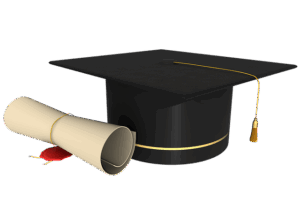Mastering Personal Statements: From Draft to Certified Application
Personal Statements/Statements of Purpose (PS/SOP) are crucial for graduate school & scholarship applications, offering a comprehensive view of an applicant's academic and personal history, motivations, achievements, and future goals. A succ…….
Personal Statements/Statements of Purpose (PS/SOP) are crucial for graduate school & scholarship applications, offering a comprehensive view of an applicant's academic and personal history, motivations, achievements, and future goals. A successful PS/SOP should include academic background, research interests, and clearly articulated career aspirations, showcasing unique stories, skills, and drive. They require meticulous attention to structure, language, and storytelling to stand out and contribute to academia's diversity.
Personal Statements, or Statements of Purpose, are crucial components of academic applications, offering applicants a chance to showcase their unique journeys and aspirations. This comprehensive guide navigates the intricacies of crafting academic-grade personal statements. From understanding key elements and tailoring your writing voice to structuring for impact and avoiding common mistakes, we demystify the process. Learn how to build an authentic, accurate, and compelling statement certified for academic excellence.
- Understanding Personal Statements: Key Elements and Purpose
- Academic vs. Professional Writing: Tailoring Your Voice
- Structure and Format: A Guide for Clarity and Impact
- Crafting a Compelling Introduction: Hooking Your Reader
- Body Paragraphs: Articulating Your Experiences and Goals
- Conclusion: Summarizing Your Journey and Aspirations
- Language Certification: Ensuring Authenticity and Accuracy
- Editing and Proofreading: Polishing Your Statement
- Building a Strong Application Package: Supporting Documents
- Common Mistakes to Avoid in Personal Statements
Understanding Personal Statements: Key Elements and Purpose
Personal Statements, also known as Statements of Purpose, are crucial documents that offer a window into an applicant’s academic and personal journey. They serve as a narrative that highlights one’s motivations, achievements, and future aspirations, especially when applying to graduate schools or scholarships. A well-crafted Statement of Purpose should include several key elements: academic background, explaining why the field of study is important to the individual; research interests and experiences, showcasing passion and expertise; and career goals, demonstrating how the program aligns with long-term ambitions.
The primary purpose of a Personal Statement is to differentiate an applicant from their peers. It allows admissions committees to assess not just academic qualifications but also critical thinking, communication skills, and personal drive. By sharing unique stories and insights, applicants can showcase their potential for success in their chosen field and contribute to the diversity and richness of the academic community. Effective Statements of Purpose are articulate, concise, and reveal a deep understanding of both the applicant’s strengths and the program they are applying to.
Academic vs. Professional Writing: Tailoring Your Voice
Personal statements and statements of purpose are pivotal documents in an academic or professional journey, demanding a distinct writing style that sets them apart from other forms of communication. The key lies in differentiating between academic and professional voices, each with its unique characteristics.
Academic writing, typically encountered in personal statements for university applications, requires a formal, analytical approach. It emphasizes structure, logic, and the presentation of facts and arguments. In contrast, professional writing, as seen in statements of purpose for job applications, leans towards a more persuasive and engaging style. Here, clarity, conciseness, and a compelling narrative are essential to showcase your skills and fit for the role. Tailoring your voice means recognizing when to employ rigorous academic language and when to adopt a tone that resonates with your intended audience, whether it’s admissions officers or hiring managers.
Structure and Format: A Guide for Clarity and Impact
A well-structured personal statement or statement of purpose (SOP) is a powerful tool for any academic application. The format plays a crucial role in conveying your ideas and experiences effectively to admission committees. Firstly, ensure a clear and logical flow by organizing your document into distinct sections. This often includes an introduction that grabs attention, body paragraphs detailing your motivations and achievements, and a conclusion summarizing your strengths as a candidate.
When crafting these essays, maintain a professional tone while incorporating personal anecdotes. Use paragraphs to separate ideas and ensure each contributes to the overall narrative. Effective use of transition words between sentences and paragraphs creates a seamless read. Remember, academic-grade personal statements should be concise, focused, and tailored to highlight your unique qualifications for the program you’re applying to.
Crafting a Compelling Introduction: Hooking Your Reader
Crafting an introduction for your personal statement or statement of purpose is a crucial step in capturing your reader’s attention and setting the tone for the rest of your application. Begin with a hook that showcases your passion, curiosity, or motivation behind pursuing the field you’re applying to. This could be a captivating anecdote, a thought-provoking question, or a unique perspective that reveals your personal connection to the subject matter. A strong introduction should not only intrigue but also provide a glimpse into your academic and professional aspirations, making the reader eager to learn more.
Ensure your opening paragraph is concise, clear, and compelling, as it forms the foundation for how your story unfolds. Use this section to set the context, highlight relevant experiences, and demonstrate why you are a suitable candidate. By effectively crafting this introduction, you’ll not only engage your reader but also ensure that your personal statement or SoP stands out, making it a memorable piece that complements your academic credentials.
Body Paragraphs: Articulating Your Experiences and Goals
When crafting your academic personal statements or statements of purpose, paying close attention to each section is paramount. The body paragraphs are where you bring your experiences and aspirations to life. These sections serve as a roadmap for your academic journey, detailing why you’ve chosen your field of study and what drives your passion for it. Each paragraph should be structured with a clear topic sentence, supporting evidence, and a concluding sentence that ties back to your central theme.
Articulating your experiences involves sharing significant moments or projects that have shaped your academic interests. Whether it’s a particular research project, an internship, or a volunteer role, these experiences provide concrete examples of your dedication and skills. When discussing goals, be specific about your aspirations within your chosen field. Explain how your past experiences have prepared you for these goals and what unique contributions you hope to make in your academic pursuits.
Conclusion: Summarizing Your Journey and Aspirations
In crafting your academic personal statements or statements of purpose, it’s essential to encapsulate a journey of intellectual growth and aspirational goals. This isn’t merely an essay; it’s a narrative that showcases who you are as a student and a future contributor to your field. It should beautifully weave together your educational background, experiences, and motivations, painting a vivid picture for admissions committees.
Your conclusion plays a pivotal role in leaving a lasting impression. Summarize your academic odyssey thus far, highlighting key experiences that shaped your path. Express your aspirations with clarity and passion, demonstrating how the program you’re applying to is integral to achieving these goals. Ultimately, this section should not only summarize your journey but also ignite excitement for what’s ahead, showcasing your eagerness and potential as a candidate.
Language Certification: Ensuring Authenticity and Accuracy
Language certification is a vital step in ensuring the authenticity and accuracy of personal statements or statements of purpose (SOPs) for academic purposes. This process verifies that the text is written in a native-like manner, free from grammatical errors, and adheres to the cultural nuances of the target language.
Certified translators, trained in academic writing, play a crucial role here. They not only translate your SOP but also ensure it captures your unique voice and ideas while meeting the rigorous standards required by universities and institutions. This certification guarantees that your personal statement will stand out for all the right reasons, showcasing your proficiency and commitment to your field of study.
Editing and Proofreading: Polishing Your Statement
Editing and proofreading are crucial steps in refining your personal statements or statements of purpose. These documents, which often showcase your academic and professional aspirations, require meticulous attention to detail. Professional editing ensures your writing is clear, concise, and free from grammatical errors, enhancing the overall quality of your statement.
Proofreaders will scrutinize your work, identifying subtle errors in sentence structure, punctuation, and even font formatting. This level of scrutiny is vital as it guarantees your Statement of Purpose presents you in the best possible light. A well-edited document demonstrates your commitment to excellence and allows admissions officers to focus on the merit of your application without distractions.
Building a Strong Application Package: Supporting Documents
Building a strong application package goes beyond just crafting an impressive personal statement or statement of purpose. Supporting documents play a crucial role in enhancing your profile and providing context to your academic journey. These documents include transcripts, letters of recommendation, and any other material that highlights your achievements, skills, and potential contributions to the program you’re applying to.
When curating these supporting materials, ensure they align with your statement of purpose, showcasing consistent themes and goals. For instance, a well-chosen letter of recommendation from a previous professor can reinforce the strengths and passions you’ve outlined in your personal statement. This synergy between your written expression and supporting documents demonstrates a thoughtful and strategic application, setting you apart from other candidates.
Common Mistakes to Avoid in Personal Statements
Many aspiring students make the mistake of treating their personal statements or statements of purpose as an afterthought, but this should never be the case. A well-crafted SOP is a powerful tool that can significantly enhance your application. Common errors include lack of focus and direction, failing to highlight unique strengths, and providing generic responses without personalized details. It’s crucial to avoid generalizations and surface-level content; instead, delve into specific experiences, accomplishments, and motivations that set you apart.
Additionally, proper structure and clarity are essential. Many applicants fall into the trap of storytelling, which can be engaging but often lacks the precision needed to convey your message effectively. Ensure your SOP is concise, coherent, and compelling. Stay away from lengthy paragraphs and unnecessary jargon; use simple language to articulate complex ideas. Remember, a well-edited personal statement that showcases your personality, goals, and potential can make all the difference in your academic journey.
Crafting an exceptional personal statement or statement of purpose is a transformative process that requires careful consideration and meticulous attention to detail. By understanding the key elements, tailoring your voice, and structuring your narrative effectively, you can create a compelling essay that highlights your unique experiences and aspirations. With proper certification ensuring authenticity, and professional editing refining your work, your academic journey will be well-represented in applications across various institutions. Remember, a powerful personal statement is not just a document—it’s an invitation to share your story with the world.



